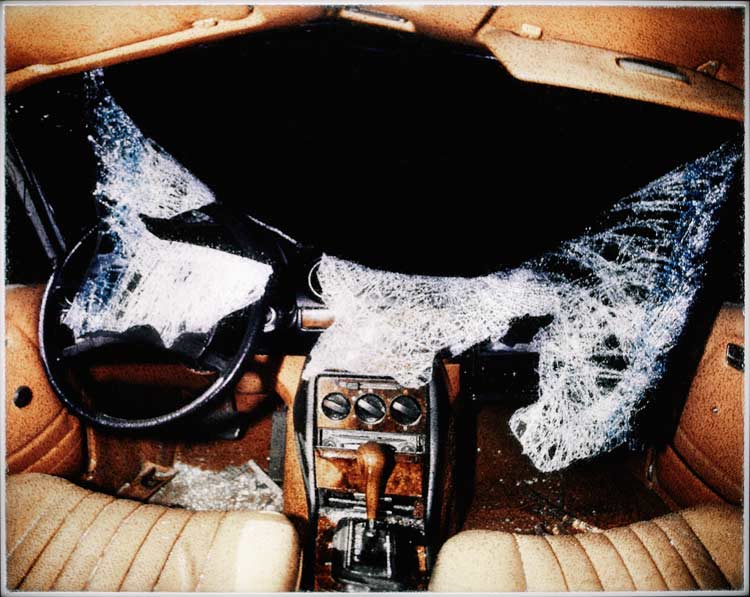Close your eyes, think Big Three auto companies, and open them again:
Just about perfect, isn’t it? An out-of-date vehicle with crappy decor designed to distract you from substandard engineering has been wrecked by a head-on collision. And what do we see now that the barrier between the car and the outside world has caved in? Utter darkness.
Even if you stagger away from the wreck, head-on collisions are particularly awful because you know you should have seen it coming. Although the crash explodes in an instant, it was developing well before: when people weren’t paying attention, when merely adequate brakes were installed, or barely adequate regulations enacted. The long aftermath of an accident is the other side of a long winding of the spring beforehand. Emily Dickinson said it best:
Ruin is formal — Devil’s work
Consecutive and slow —
Fail in an instant, no man did
Slipping — is Crash’s law.
The Big Three didn’t collide with market reality overnight. They had been warned and warned, but they looked the other way, as did a lot of other people. The result is broken glass, broken dreams, and a dark future.
The photograph is by Nicolai Howalt, from his series Car Crash Studies. I found the series at Amy Stein’s blog on photography. The poem is an excerpt from “Crumbling is not an instant’s Act.”
Cross posted at BAGnewsNotes.

Maybe I’ve been lurking on comment sites too long, because this is not about the image—but, why is the auto industry getting a bailout? I would much rather bail out NEWSPAPERS, as they are vital to democracy.